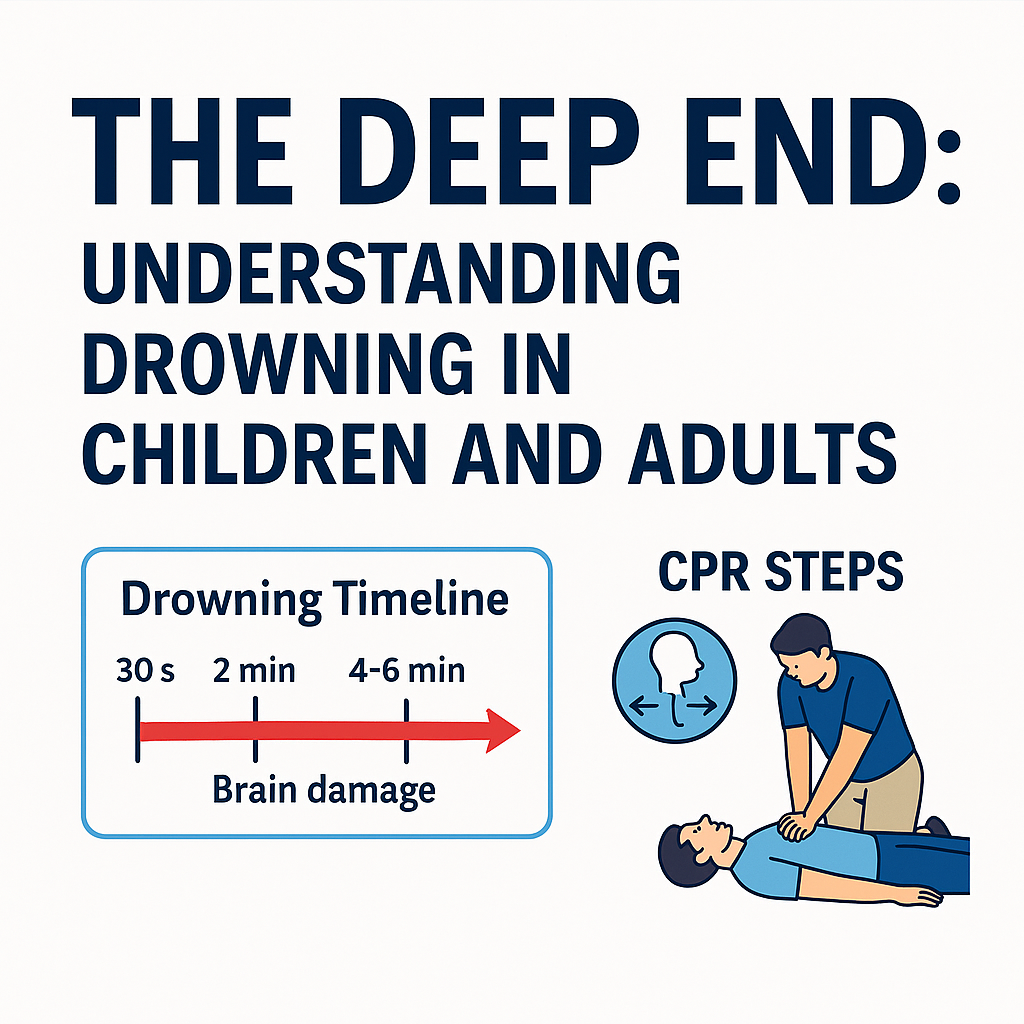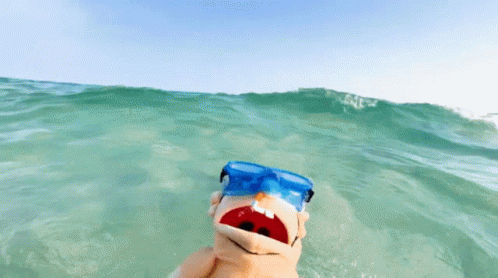🏊♂️ The Deep End: Understanding Drowning

Swimming Summer Series | Week 1 – Varrock Street Journal
Welcome to Our Swimming Summer Series
Hello again Varrock Street Journal community!
With summer coming to an end, this article may seem a bit delayed, but not everyone is finished with their summer festivities, which means long days at the pool, beach, or lake. But while swimming is a refreshing way to cool off and stay active, it also comes with real medical risks. For this summer series, we’re diving into the health hazards that can occur in the water — and how to keep ourselves and our loved ones safe.
This week, we're starting with a topic that’s as tragic as it is urgent: drowning. It’s fast, it’s silent, and it doesn’t always look the way Hollywood portrays it. Whether you're a parent, a lifeguard, or just someone who loves the water, understanding the mechanisms, treatment, and long-term outcomes of drowning could save a life.

What Happens When Someone Drowns? A Look at Mechanism, Timing & Response
Drowning occurs when someone is submerged in water and unable to breathe, leading to hypoxia (low oxygen) and eventually asphyxiation (suffocation). The body’s natural response to water in the airway is laryngospasm, a reflex that closes off the throat — which may initially prevent water from entering the lungs but also blocks air. Eventually, the spasm relaxes, and water is aspirated.
Contrary to what many think, drowning is often silent. Children especially may not splash or scream — they slip under in seconds. Within 30 seconds to 2 minutes, lack of oxygen starts damaging the brain. After 4-6 minutes, brain injury is likely. Beyond 10 minutes, survival becomes rare without permanent damage, though cold water immersion may extend this window in some cases by slowing metabolism.
Key symptoms after rescue include coughing, bluish skin, confusion, and in some cases, delayed pulmonary edema (fluid in the lungs) — sometimes hours later. This is why "near-drowning" patients should be monitored even if they seem fine initially.
Treatment, Follow-Up, and Long-Term Effects
Immediate treatment starts with removal from the water and basic life support (BLS). If the person isn’t breathing, rescue breaths are critical, followed by chest compressions if there’s no pulse. Paramedics may provide oxygen, intubation, or CPR with defibrillation depending on the situation.
In the hospital, patients are monitored for ARDS (acute respiratory distress syndrome), hypothermia, aspiration pneumonia, and neurologic injury. Long-term outcomes depend on how long the brain was deprived of oxygen. Some children and adults make a full recovery. Others may have permanent neurologic deficits such as memory loss, motor impairment, or seizures.
Here is a video reminding us how to do proper CPR! If you're looking for more, go find a CPR training location near you!
Prevention Is Powerful: What You Can Do
- Supervise closely: Especially around kids. Drowning is the leading cause of unintentional death for children aged 1–4.
- Install barriers: Fences, pool covers, and alarms save lives.
- Swim lessons: Teach children to swim early and reinforce water safety habits.
- Don’t rely on floaties: They give a false sense of security.
- Avoid distractions: Keep your eyes on the water — phones can wait.
- Learn CPR: Fast action saves lives.
- Alcohol and swimming don’t mix: Especially in lakes and rivers with unpredictable conditions.
Why This Matters
Every year, around 4,000 fatal unintentional drownings occur in the U.S. — about 11 people per day — and countless more result in ER visits, ICU admissions, and long-term complications. Understanding the mechanism of drowning isn’t just academic — it’s a call to action. One moment of prevention, or one well-trained response, can make the difference between life and death.
Here is a brief podcast discussing the major issue of drowning if you're looking for more!
Spotlight on Future Applications
Recent advancements are exploring:
- AI-assisted pool surveillance
- Improved drowning detection through underwater cameras
- Cold-water hypothermia resuscitation protocols
- Expanded public health messaging in underserved communities
There's also promising research on oxygenation techniques during resuscitation and neurologic outcome prediction tools to aid in post-rescue care.
Reflection Questions
- How can we rethink water safety in homes without pools, like bathtubs and garden ponds?
- What role should schools and communities play in teaching swimming and CPR?
- How do we talk to children about water risks without instilling fear?
📚 Sources
- Centers for Disease Control and Prevention (CDC). (2022). Drowning Prevention.
- Szpilman, D., Bierens, J. J., Handley, A. J., & Orlowski, J. P. (2012). Drowning: Definition, prevention, intervention, and rescue. Circulation, 126(12), 1461–1485.
- World Health Organization (WHO). (2023). Global Report on Drowning: Preventing a Leading Killer.
- American Academy of Pediatrics (AAP). (2021). Policy Statement: Prevention of Drowning.
- American Heart Association (2020). Basic Life Support for Healthcare Providers.
